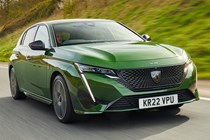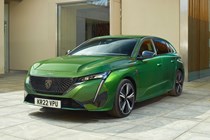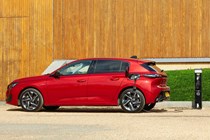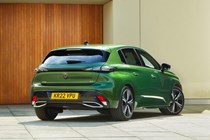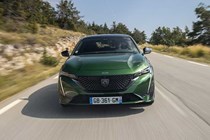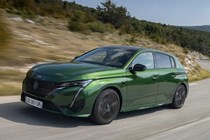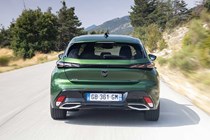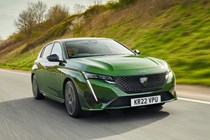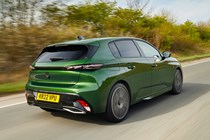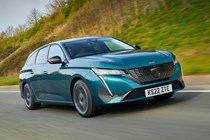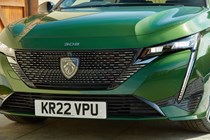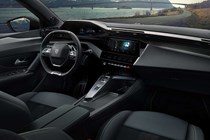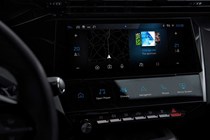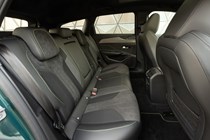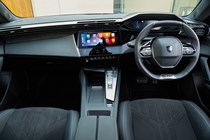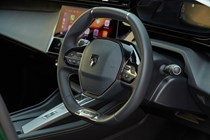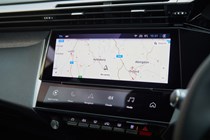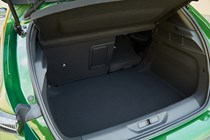
Peugeot 308 engines, drive and performance
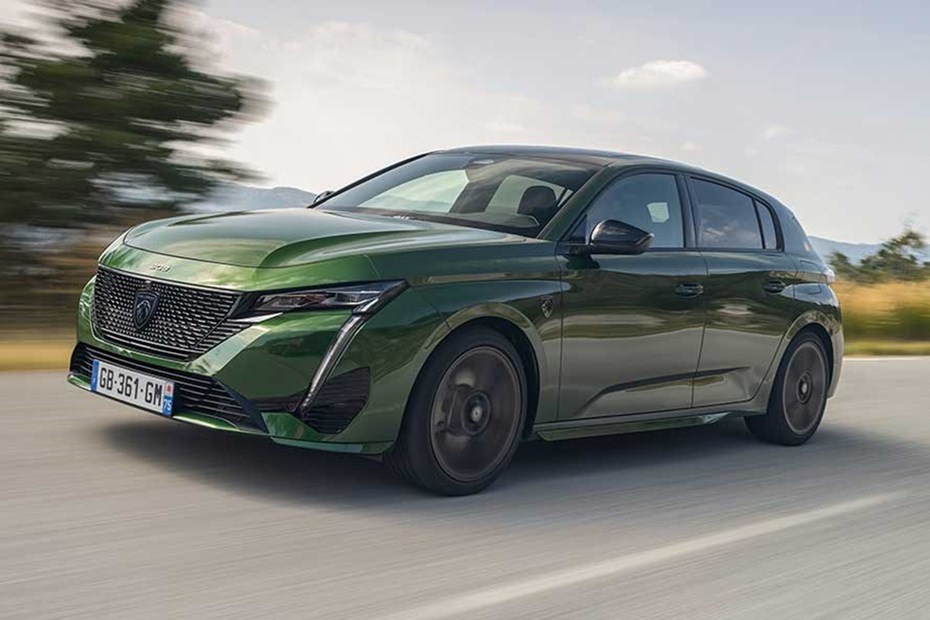
- 1.2-litre petrol model is the sweet spot
- PHEV systems offer plenty of poke
- Not particularly engaging to drive
Petrol engines
There’s just one petrol option available with the Peugeot 308. It’s a turbocharged 1.2-litre three-cylinder unit, which produces 130hp and 230Nm of torque – and we definitely think it’s the engine to go for. It’s responsive, surprisingly refined for a three-cylinder unit and powerful enough to give you the confidence to overtake.
As with every engine in the 308 range, the petrol is only available with an eight-speed automatic gearbox. It’s not as smooth as a Volkswagen Group DSG, and it can be slow to change down when you push the throttle to the floor, but it does a good job of keeping the engine quiet. You can also sharpen up the gear changes by engaging Sport mode.

Diesel engines
Diesel has fallen out of favour of late, so Peugeot only offers one choice with the 308. It’s a turbocharged 1.5-litre four-cylinder unit with 130hp and 300Nm of torque. However, unless you regularly need to cover enormous distances, we wouldn’t recommend it.
That torque figure looks impressive, but the engine is far more lethargic than you expect. In-gear acceleration is quite slow, the extra weight negatively affects the handling and the engine is noisy if you ask for full throttle. It’s also fairly rattly at low speeds, although it settles down well once you’re cruising on the motorway.
Plug-in hybrids
You get two choices here – both based on the same 1.6-litre four-cylinder petrol engine. As previously mentioned, you have a choice of two power outputs. The entry-level plug-in hybrid model has a combined output of 180hp, while the flagship variant develops 225hp. The torque figure is the same for both powertrains at 320Nm.
Both systems have plenty of poke, but they’re hampered by dim-witted software. When you floor the throttle in the hope of exploiting a gap, there’s a delay before the gearbox changes down and then a further pause before the electric motor kicks in to shove you past your overtaking victim.
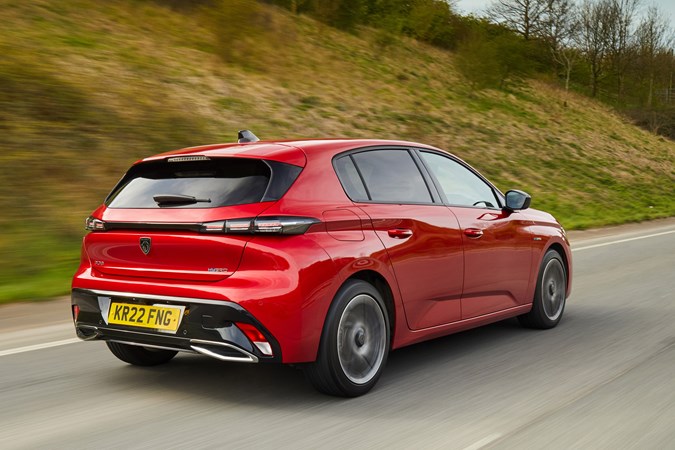
You wait two seconds before anything happens, even in Sport mode. To get the best from the PHEVs, you need to be a little gentler on the accelerator. Around 70 percent throttle seems to be the ideal amount to make the gearbox and electric motor work as you’d like.
Also, because both PHEV systems produce the same amount of torque, the more expensive 225hp variant doesn’t feel any faster than the 180hp model. The performance figures back up our observations – the 180hp model sprints from 0–62mph in 7.6 seconds, while the 225hp variant is only a tenth of second faster. Is that worth an extra £1,400?
What’s it like to drive?
Slightly odd, if we’re honest. The firm suspension makes the Peugeot 308 feel sporty, but the high seat, low steering wheel driving position means you don’t have the confidence to hustle the car down a twisty road. The seat and wheel combo is the exact opposite of what’s expected in a sporty hatch.
The stiff dampers allow for very little body roll, but they have a tendency to unstick the chassis if the corner you’re rounding isn’t perfectly smooth. And let’s face it – we’re in the UK. The road won’t be smooth. Fling the 308 down a yumpy B-road and it’ll be constantly moving under you. The hatchback isn’t very settled on anything but an A-road or a motorway.
The handling also differs slightly depending on which engine you opt for – although this isn’t necessarily a bad thing. The 1.2-litre petrol unit is by far the best engine in the range for handling, as it’s light and therefore doesn’t have a lot of weight pushing the front of the car wide in the corners.
The PHEV powertrains are much heavier (upwards of 1,600kgs, compared to the 1,288kgs of the petrol model), which means they don’t handle as well as the pure petrol model. However, it’s definitely one of the most dynamic PHEV models in the hatchback class, offering better handling than the likes of the Volkswagen Golf e-Hybrid and Mercedes A 250 e. There’s a benefit to that extra weight, as well – it makes the 308 a lot more comfortable. We’re interested to see whether this effect will be amplified by the upcoming pure-electric model.
Every version of the 308 has quick steering, thanks in equal measure to the gearing on the steering rack and the tiny steering wheel. The brakes are responsive and surprisingly powerful. PHEV models also feature a mild regenerative braking system – and while the changeover between energy recovery and friction braking is noticeable, it’s smooth enough.


